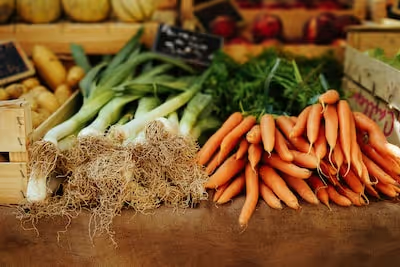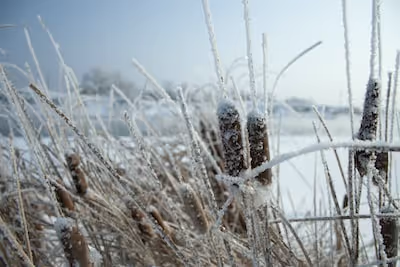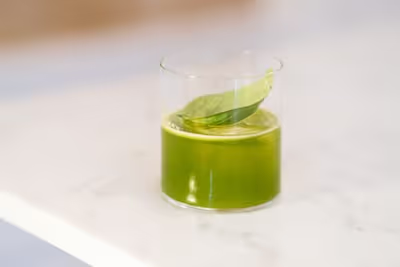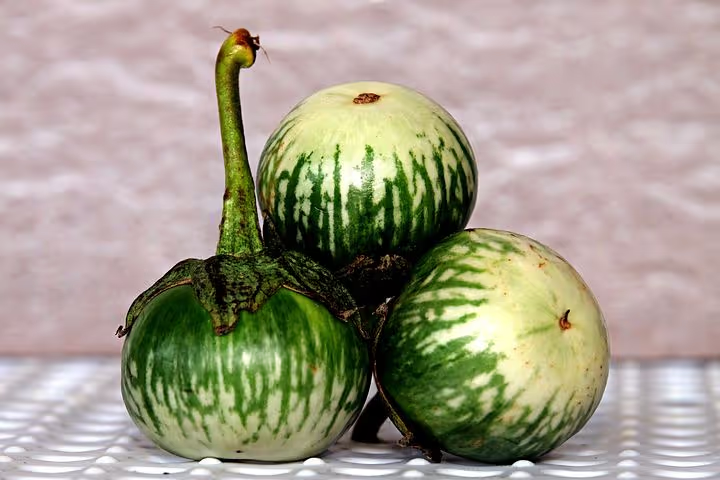Growing Pineapple Sage for Fragrant Herbs and Bright Flowers
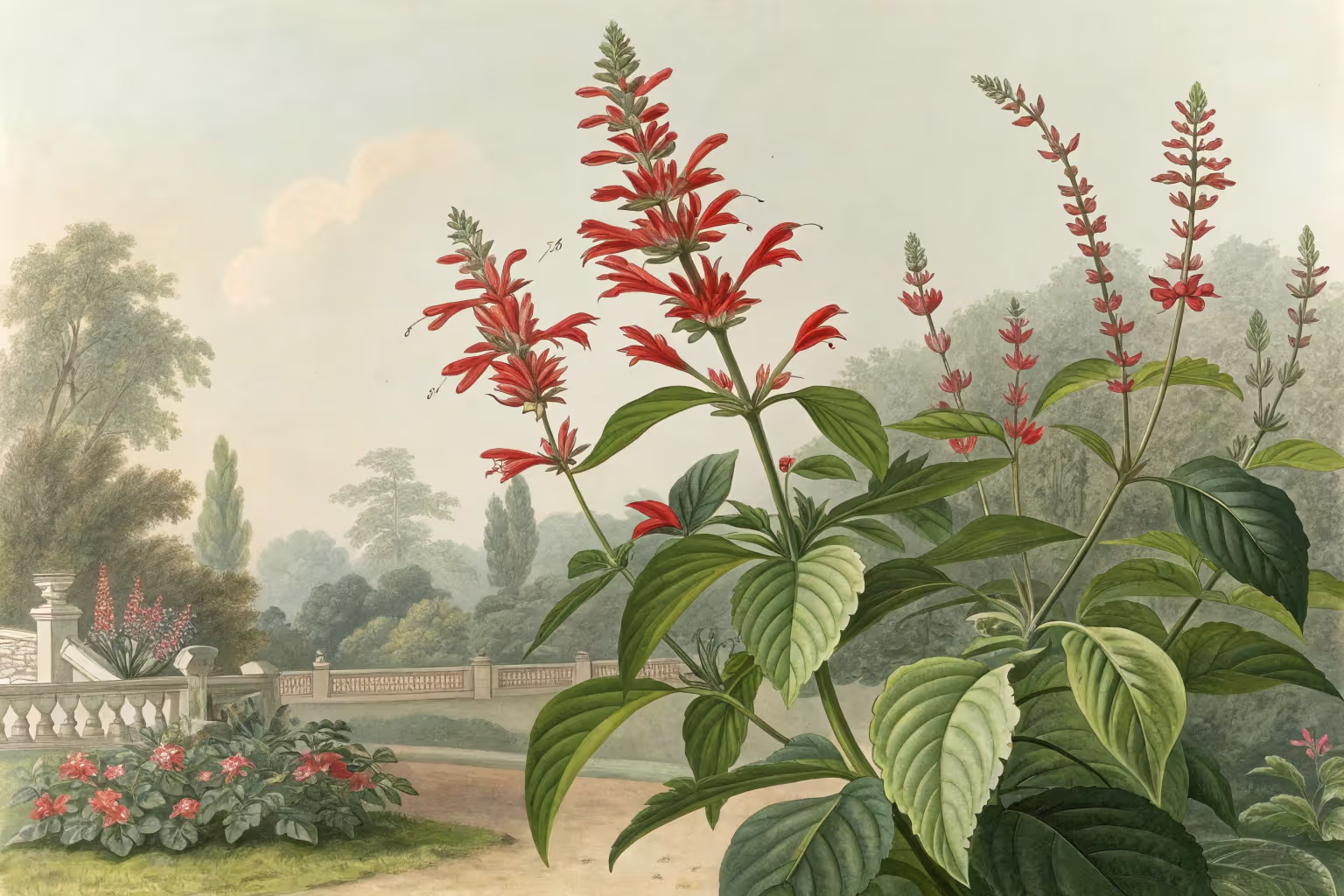
Growing Pineapple Sage
Growing pineapple sage rewards gardeners with vibrant scarlet blooms, fragrant pineapple-scented leaves and fantastic hummingbird traffic. Plant it in full sun, water regularly, and prune generously to shape and encourage lush growth. Perfect for infusions, desserts or cocktails—pineapple sage turns an ordinary garden into a sensory playground worth savoring.
Cheatsheet: Cultivating Pineapple Sage at Home
🌱 Location & Soil
- Full sun—min. 6 hrs daily
- Rich, well-drained soil (pH 6-7)
- Space plants 24" (60 cm) apart
🌡️ Temperature & Water
- Thrives at 65–85°F (18–30°C)
- Protect below 50°F (10°C)
- Water when top 1" (2.5 cm) is dry
- Avoid soggy roots
🛠️ Tools and Products You’ll Need
- Hand trowel
- Sharp scissors or pruners
- Compost or organic fertilizer
- Mulch
- Pot (min. 12" / 30 cm) for containers
🔁 Planting & Growing Steps
- Prepare soil: Mix compost, loosen to 8" (20 cm)
- Plant: Set rooted cuttings or nursery plants after last frost
- Mulch: Apply 2" (5 cm) to retain moisture
- Water: Keep soil moist but not wet, especially in heat
- Feed: Fertilize lightly every 4–6 weeks during growing
- Pinch tips: Encourage bushy growth and more blooms
- Deadhead: Remove spent flowers to prolong blooming
🌺 Flower & Harvest Facts
- Showy red blooms attract hummingbirds, butterflies
- Leaves emit strong pineapple scent when crushed
- Harvest leaves before flowering for best flavor
- Blooms edible; use in teas, salads, desserts
- High in antioxidants and vitamin K
🍃 Culinary & Health Perks
- Add fresh leaves to teas, salsas, fruit salads
- Use dried leaves for winter infusions
- Supports self-sufficiency; perennial in zones 8–11 (USDA)
💡 Pro Tips
- Prune hard after frost for vigorous regrowth
- Overwinter indoors in cool climates
- Repels deer and attracts pollinators
- Average mature height: 3–4 ft (1–1.2 m)
-
Growing Pineapple Sage for Fragrant Herbs and Bright Flowers
Growing Pineapple Sage turns late summer beds into a nectar bar with lipstick-red blooms and leaves that smell like a fresh-cut pineapple. I plant it near paths so brushing past the foliage is like a free aromatherapy session.
Botany and habit
Salvia elegans hails from the highlands of Mexico and Guatemala, where cool nights and bright light cue the show. In gardens it grows fast, mounding to 3 to 5 feet tall (0.9 to 1.5 m) and as wide.
This plant is a tender perennial in USDA Zones 8 to 11. In colder regions I treat it as an annual or overwinter cuttings indoors.
Light, heat, and seasonality
Pineapple sage loves full sun, with at least 6 hours of direct light. Afternoon shade helps in hot interiors where summer spikes past 95 F (35 C).
It is a short-day bloomer, so the fireworks arrive from late summer into fall. Expect peak color when day length drops and nights cool to 50 to 60 F (10 to 16 C).
“Short-day plants initiate flowering as nights lengthen toward late summer.” NC State Extension and multiple horticulture texts describe pineapple sage this way.
Soil and nutrition
Give it a loose, sharply drained mix: loam or quality potting soil with 20 to 30 percent perlite or pine bark fines. Aim for pH 6.0 to 7.5, with organic matter that drains freely.
I feed lightly. A slow-release balanced fertilizer around 5-5-5 in spring works, then I side-dress with compost midseason to keep growth steady without lush, floppy stems.
Watering rhythm
Keep soil evenly moist in the first month to push roots deep. After that I water when the top inch (2.5 cm) dries, about 1 inch (2.5 cm) per week in-ground, more in containers during heat.
Good airflow matters. Wet leaves overnight invite mildew if nights run humid and cool.
Spacing, staking, and pruning
Space plants 24 to 36 inches (60 to 90 cm) apart. In rich soil I add a discreet ring stake once stems hit 24 inches to prevent wind-flop.
Pinch tips at 8 to 10 inches (20 to 25 cm) to promote branching. I stop pinching after midsummer to avoid delaying blooms.
Containers that actually work
Use a 5 to 10 gallon (19 to 38 L) pot for a single plant. Terracotta breathes but dries fast, so I add a touch of coco coir for moisture buffering.
Choose a peat-free mix if available. I blend 60 percent high-quality potting soil, 20 percent compost, 20 percent perlite by volume.
Overwintering strategies
In Zones 8 to 11, cut stems back to 6 inches (15 cm) after frost blackens growth and mulch 2 to 3 inches (5 to 7.5 cm). It often resprouts from the crown in spring.
Colder zones: take 4 to 6 inch (10 to 15 cm) cuttings in late summer, root them, and grow under bright indoor light at 60 to 70 F (16 to 21 C). I also pot up a mother plant and park it in a cool, sunny window.
Propagation that never fails
Softwood cuttings root fast. Strip lower leaves, wound the base lightly with a clean blade, dip in rooting powder if you like, and stick in a 50:50 perlite and peat or coir mix.
Keep humidity high for 10 to 14 days. Seeds exist, but cuttings clone flavor and habit reliably.
Bloom timing problems solved
No blooms by fall usually means too much shade, heavy nitrogen, or constant pinching past July. Short nights from streetlights can also confuse flower set.
I once moved a plant 15 feet away from a dusk-to-dawn lamp and it started throwing scarlet spikes within three weeks. Small changes flip the switch.
Culinary uses with real payoff
The leaves taste bright and herbal with pineapple top-notes. I muddle them in iced tea, fruit salad, and simple syrup for cocktails.
Flowers are edible, mildly sweet, and gorgeous on cakes or ceviche. Steep leaves at 190 F (88 C) for 5 minutes for tea, then chill over ice with citrus.
Design and ecology
Pair with Mexican bush sage, zinnias, and blue salvias for a saturated late-season palette. The red trumpets feed hummingbirds and late butterflies when other nectar sources fade.
“A ruby-throated hummingbird may visit up to 1,000 flowers in a day,” according to summaries from the Cornell Lab of Ornithology. Pineapple sage earns its keep during migration season.
Pests, disease, and wildlife
Deer usually ignore aromatic salvias, though a hungry herd samples anything. Aphids, whiteflies, and spider mites show up during heat and drought.
I blast pests off with water, then release lacewing larvae if it escalates. A weekly neem or insecticidal soap rotation works if you keep coverage thorough.
Harvest and storage
Pick leaves in the morning after dew dries for peak aroma. Use fresh for best flavor, since drying mutes the pineapple note.
For winter, I freeze chopped leaves in ice cube trays topped with water or light syrup. Flowers can be candied the day they open.
Key specs at a glance
- Hardiness: USDA 8 to 11, grown as annual elsewhere
- Height and spread: 3 to 5 ft tall by 2 to 4 ft wide (0.9 to 1.5 m by 0.6 to 1.2 m)
- Light: full sun to light afternoon shade
- Soil: well-drained, fertile, pH 6.0 to 7.5
- Bloom: late summer to frost, short-day response
Buying guide for Growing Pineapple Sage
Starter plants outperform seed for uniform aroma and bloom time. I look for sturdy 4-inch (10 cm) starts with fresh green growth and no whitefly speckling.
- Size: 4-inch to 1-gallon pots establish fastest outdoors.
- Timing: purchase in late spring once nights stay above 50 F (10 C).
- Quality: check roots; they should be creamy white and not circling aggressively.
- Typical price range: 5 to 15 USD or 4 to 14 EUR per plant, depending on container size and cultivar.
Top cultivars and close alternatives
- Golden Delicious: chartreuse foliage, same red flowers, best color in full sun, spectacular in containers.
- Frieda Dixon: soft pink flowers, a surprise pairing with silver foliage plants like artemisia.
- Honey Melon: compact habit, good for smaller pots and balcony gardens.
- Alternatives for late color: Salvia leucantha (Mexican bush sage), Salvia guarantica (black and blue), Salvia coccinea for easy reseeding annual color.
- Pineapple-scented cousins in the kitchen: pineapple mint and lemon verbena for teas and syrups, though they lack the fall hummingbird magnetism.
Companion planting and layout
I run pineapple sage behind basil and peppers, where its height shelters them from wind and the flowers lure pollinators. Its root system plays nicely with shallow-rooted annuals.
For containers, tuck in trailing nasturtiums and a blue lobelia skirt for contrast. Keep the mix simple so the red spires remain the headliner.
Indoors and grow lights
You can overwinter a compact plant indoors with 12 to 14 hours of bright light and a fan on low. Aim for 55 to 65 percent relative humidity and water less in winter.
Under LEDs, I keep the canopy 12 inches (30 cm) below the light and prune lightly to maintain shape. Expect fewer flowers indoors due to photoperiod quirks.
Common questions I get
- Does it come back each year? Yes in Zones 8 to 11; elsewhere, keep cuttings or overwinter a pot.
- Why are leaves yellowing? Usually overwatering or soggy soil; improve drainage and let the top inch dry.
- Why won’t it bloom? Too much shade, high nitrogen, or night lighting interference.
- Is it invasive? No, it does not spread aggressively or run by rhizomes in typical gardens.
- Safe to eat? Leaves and flowers are widely used culinarily; avoid heavy pesticide use if you plan to harvest.
My field notes and tiny upgrades that matter
I get the best branching by pinching twice before July 4, then letting buds form. A single tablespoon of bone meal scratched in mid-August pushed bloom in my Zone 9 bed by two weeks.
Mulch with shredded leaves rather than heavy bark so spring soil warms faster. A thin reflective stone edging on the south side added a microburst of heat that sped early growth.
Referenced resources worth reading
Royal Horticultural Society profiles on Salvia care cover sun, drainage, and deadheading with clarity. NC State Extension and University of Florida IFAS note its short-day bloom behavior and tender-perennial status in cooler climates.
Cornell Lab of Ornithology offers hummingbird feeding behavior that explains why late-season nectar plants matter. UC Master Gardeners provide practical pest management for aphids, whiteflies, and mites without heavy chemicals.
Frequently Asked Questions About Growing Pineapple Sage
What type of soil supports healthy growth?
Loamy, well-drained soil encourages vigorous growth and reduces the risk of root diseases. Incorporating organic compost improves soil fertility and drainage, providing an ideal setting for thriving plants.
What sunlight conditions are ideal?
This fragrant herb thrives under full sun, requiring at least 6 hours of direct sunlight daily. However, in areas experiencing intense afternoon heat, partial afternoon shade helps maintain vibrant foliage and prevents leaf scorching.
How often should watering occur?
Regular watering sustains consistent moisture levels, encouraging lush growth. Water deeply once or twice weekly, allowing the soil to dry slightly between sessions. Be sure to adjust frequency according to rainfall, temperature, and seasonal variations.
Which climates best suit this aromatic herb?
This plant flourishes in temperate to subtropical zones (USDA Hardiness Zones 8 to 11). Temperatures between 60°F to 80°F (16°C to 27°C) provide optimal growing conditions, ensuring healthy, aromatic foliage and blossoms.
What's the recommended pruning routine?
Regular pruning stimulates new growth and maintains a neat form. Trim back stems by approximately one-third in early spring or after flowering to encourage dense, bushy growth and abundant blooming.
Are pests or diseases common concerns?
While generally resistant to pests and diseases, occasional issues like aphids, spider mites, or powdery mildew may arise. Monitor plants closely, intervening promptly with organic treatments or gentle insecticidal soaps to preserve plant health and longevity.
How can propagation occur effectively?
Propagation happens easily through stem cuttings. Take cuttings approximately 4 to 6 inches (10 to 15 cm) long from healthy plants, removing lower leaves, and placing into moist potting mix. Roots typically form within 2 to 3 weeks.
When is harvesting optimal?
Harvest leaves regularly during the growing season for culinary or aromatic uses. For optimal flavor, gather leaves just before flowering occurs, typically in late summer or early autumn.
Growing Pineapple Sage brings a punch of color and a hit of fragrance that’s hard to beat. You get those electric red blooms, a magnet for hummingbirds, and the leaves—sweet, herbal, with a note of pineapple that feels almost tropical on your tongue. If you’re already growing sage or other culinary herbs, this one’s a no-brainer addition. It thrives in full sun, forgives the occasional dry spell, and rewards you with both beauty and flavor. Snip a few stems for tea, scatter some flowers over dessert, or just let it do its thing in the garden. In short, growing pineapple sage isn’t just easy—it’s a sensory upgrade to your patch of earth.
The Homesteader's Take: Pineapple Sage for Self-Sufficiency
Natural Pollinator Attraction
- Boost Pollination: Pineapple sage draws hummingbirds, butterflies, and bees, raising crop yields throughout the garden.
- Increase Fruit Set: Plants near pineapple sage see up to 20% more fruit development due to enhanced pollinator activity.
Edible & Medicinal Uses
- Tea & Infusions: Steep leaves in boiling water for soothing herbal tea high in antioxidants and anti-inflammatory properties.
- Culinary Uses: Finely chop young leaves for desserts, summer salads, or poultry marinades to achieve subtle fruity scent and taste boost.
Propagation Strategies for Sustainability
- Easy Rooting: Snip 10-15 cm (4-6 inch) shoots, remove lower leaves, place in water; roots appear within 2 weeks for free plant multiplication.
- Save Seeds: Allow flowers to dry naturally, harvest seeds, store in dry, cool, dark condition—2-3 years viability guaranteed.
Natural Pest Control
- Deters Pests: Repel aphids and cabbage moths by strategically planting pineapple sage alongside brassicas and beans, limiting pesticide need.
- Companion Benefits: Plant near vegetable beds to decrease infestation risk and safeguard crops organically.
Find out which plants will thrive in your garden!
Answer a few fun questions and get custom plant recommendations perfect for your space. Let’s grow something amazing together!

start your season
